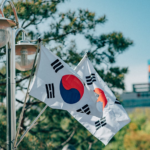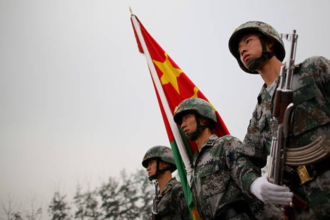Trekking in the Himalayas, a British visitor sadly passed death with a friend. Local rescue officials claim that the two British guys were hiking in “very difficult terrain” close to the Dharamshala town when one of them suffered critical injuries.
Although the Himalayas Trekking boasts amazing beauty, its high altitude conditions, erratic weather, and rocky terrain provide various hazards. Though many visitors come into these mountains annually to enjoy their splendor, mishaps are not rare. Tragic events happened while the two British guys were descending. One of them collapsed, and his friend went right to the next village for assistance.
The rescue effort was conducted how?
Respected and hauled down the mountain on a stretcher, the wounded guy was Still, the rescue operation lasted about twenty-four hours because of the difficult terrain. Declared dead by the time he got to the hospital. The Himalayas Trekking sometimes entails distant and lonely paths, making rescue attempts more difficult.
“After four hours of trekking, the team located the victims at 10:30 p.m., with one trekker in a critical state,” the Himachal Pradesh situation Disaster Response Force (HP SDRF) said. They started the difficult descent with his co-trekker after strapping the important trekker onto a stretcher.”
The rescue team said their progress was somewhat slow since the terrain was quite dangerous. The rescuers said, “the rough terrain and repeated crossings of a rivulet made progress extremely slow, requiring nearly two hours to cover just 100 meters.”
In the Himalayas, trekkers must frequently negotiate narrow ridges, high hills, and erratic weather conditions. The region where the accident happened is notorious for its rough surroundings, making the evacuation effort even more arduous.
The victim arrived to the hospital when?
The rescue squad asked for assistance overnight, and early on to help with the evacuation more rescuers showed up. “They kept moving the victims but found great difficulty because of the steep terrain; they needed several anchorings of the stretcher,” the rescue team said.
At 5:08 p.m. the next day, the injured hiker was ultimately brought to the hospital; upon arrival, he was proclaimed dead. His friend was unscathed.
Rescue missions along Himalayan Trekking paths might take quite a lot of time. Any emergency reaction will be slowed significantly by the mix of rocky routes, low temperatures, and high altitude conditions. This specific operation needed a lot of personnel and tools, and despite the best efforts of the rescuers the injured visitor could not be saved in time.
Did they know about the ban on treking?
According to reports, Himalayas Trekking in high-altitude regions was temporarily banned by the local authorities in Kangra district. Still, reports said the two visitors were not aware of this restriction. When the terrible occurrence happened, they had arrived at the snowline—that portion of the mountain where snow stays the ground year-round.
Before starting such trips, trekkers may have to review local policies and weather warnings. In this situation, the ignorance of the trekking ban by the visitors emphasizes the need of keeping current with official rules. Safety issues had led to the prohibition; if the hikers had known, they might have changed their intentions or added more care.
What risks exist associated with Himalayan trekking?
Trekking in the Himalaysas Among the various risks involved in treking include erratic weather, altitude sickness, landslides, and difficult terrain. Especially in some seasons, many trekking pathways include paths that could get quite unstable or slippery.
Altitude sickness is another big risk. Trekkers’ thinner air as they climb higher causes their oxygen levels to drop. Quick development of symptoms like nausea, dizziness, and dyspnea can lead to altitude sickness, which in severe forms can be fatal. Before visiting higher altitudes, it is advised always to thoroughly acclimate.
A major risk in the Himalayas Trekking are also landslides. Especially during the monsoon, the area suffers regular landslides. Unexpected changes in the ground can imprison hikers or render trails unreachable, therefore complicating rescue operations.
For the victim's family, what are actions being taken?
“We are supporting the family of a British man who has died in India and are in contact with the local authorities,” a foreign office spokesman said.
The victim is yet unidentified formally. Before visiting high-altitude Himalayas Trekking areas, authorities still advise trekkers to be updated about local restrictions and weather conditions.
Trekking groups and local authorities stress the need of appointing seasoned guides familiar with the terrain and weather conditions. Many mishaps happen when hikers undervaluate the difficulties these high-altitude paths offer.
How can upcoming mishaps in trekking avoided?
Several actions can help to stop more incidents in the Himalayas Trekking. Before starting their trip, hikers should first always be sure to look for any travel advisories, weather warnings, and local limitations.
Proper preparation, including carrying the correct equipment, emergency supplies, and adequate food and water, is vital. Trekkers should also tell someone their intended path and expected return time. Ensuring safety can be much improved by appointing seasoned local guides.
Trekkers should also receive basic first aid instruction and learn how to spot altitude sickness signs, authorities also advise. In emergency situations, learning how to perform first aid can be life-saving.
This tragedy teaches us what?
This sad event reminds us of the hazards connected to Himalayan trekking. Although the Himalayas are still an amazing and exciting place to visit, they demand careful planning, appropriate gear, and respect of local customs.
Safety always comes first for trekkers, not adventure. Following rules, getting ready for difficult circumstances, and keeping current will help to avoid next disasters. Local governments continue to emphasize the importance of safety measures and urge tourists to be cautious when exploring these magnificent but dangerous mountains.
Though many adventurers dream of the Himalayas Trekking, it should be respected and carefully thought out. This event emphasizes the importance of careful planning and ethical hiking methods to guarantee the security of every tourist.







